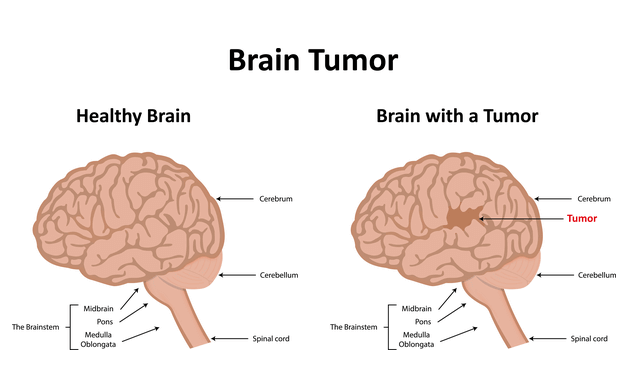
Brain Tumours V Brain Aneurysms: Understanding the Difference
Headache is the most common form of ailment we have all experienced at some point in our lives. Most headaches are not causes of worry, but if it persists and worsens over a period of time, it may signal towards a much serious health condition.
What Are the Common Types of Headaches?

- Tension: Mild and feels like a tight band around the head.
- Cluster: Usually more painful, and develops in clusters on one side of the head, especially near the eye.
- Migraine: Most severe, they are characterised by intense, pulsating pain and are accompanied by nausea and sensitivity to light.
If you experience any of the above, chances are that basic medications can help relieve the symptoms.
When Should You Worry?

An unusual or new headache, along with symptoms like tingling or numbness in a limb may be a sign of a brain tumour.
Brain tumours are growths inside the skull or in the central spinal canal formed due to cell mutations in DNA. They divide and grow exponentially over a period of time.

Specific symptoms of a brain tumour include:
- Headache
- Nausea
- Dizziness
- Disorientation
- Speech difficulty
- Hearing problems or
- Behaviour changes
A brain aneurysm, on the other hand, is a weak spot on a blood vessel, which is often discovered after it has ruptured. Know more about brain aneurysms here.

Patients with bleeding aneurysms report having the “worst headache of their life”. These intense headaches often are accompanied by a brief loss of consciousness.
Specific symptoms for a brain aneurysm are:
- Sudden, extremely severe headache
- Nausea and vomiting
- Stiff neck
- Blurred or double vision, drooping eyelids
- Sensitivity to light and confusion
- Seizure
- Loss of consciousness
Treatment Methods for Brain Tumours
Depending on the type of brain tumour, it can be observed and not surgically removed right away. Depending on the type and location of the brain tumour, radiation can be an option for treatment.
Treatment Methods for Brain Aneurysms
Once discovered, the brain aneurysm is either clipped or the patient undergoes endovascular coiling. If the aneurysm is discovered after rupturing, the goal is to stop the bleeding and any potential permanent damage to the brain.





